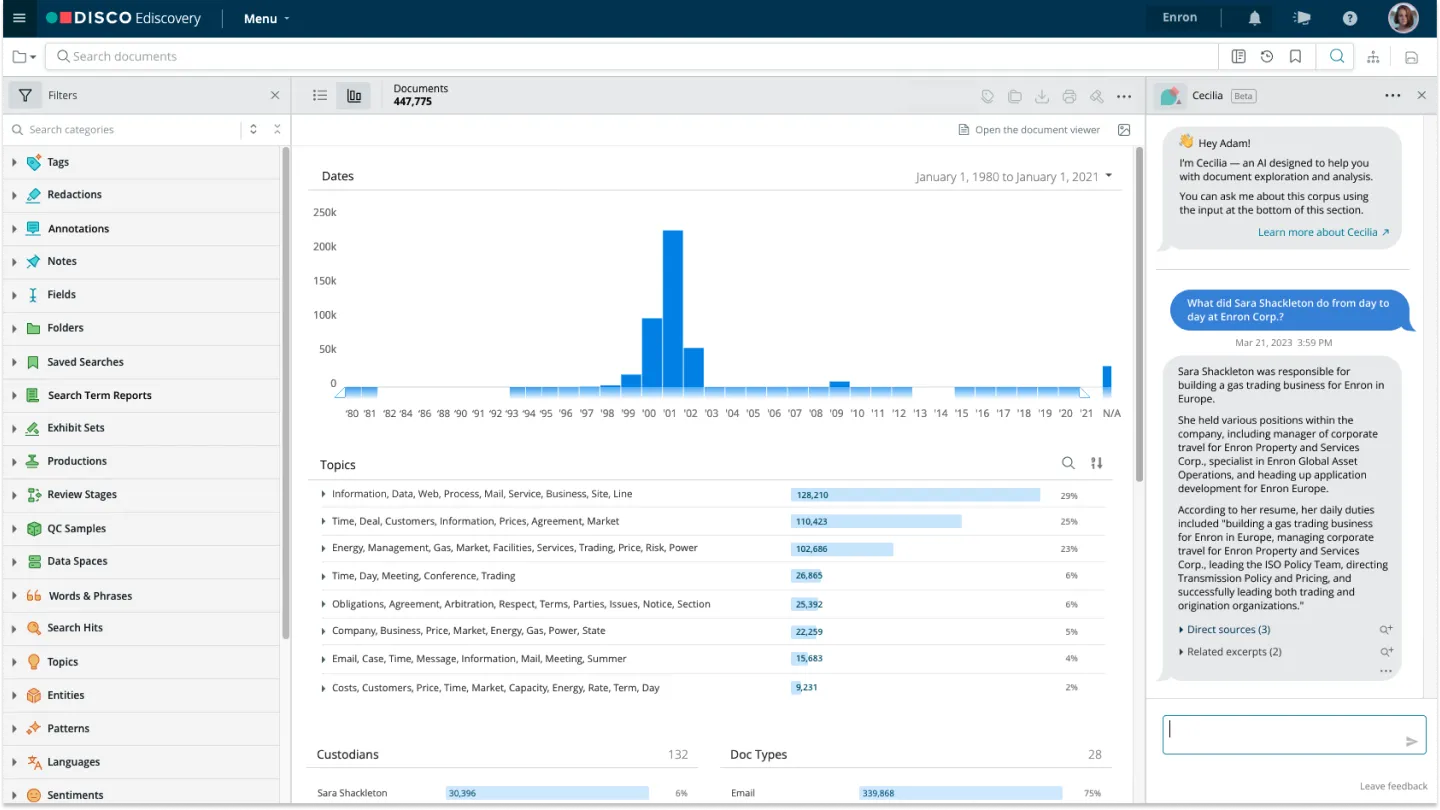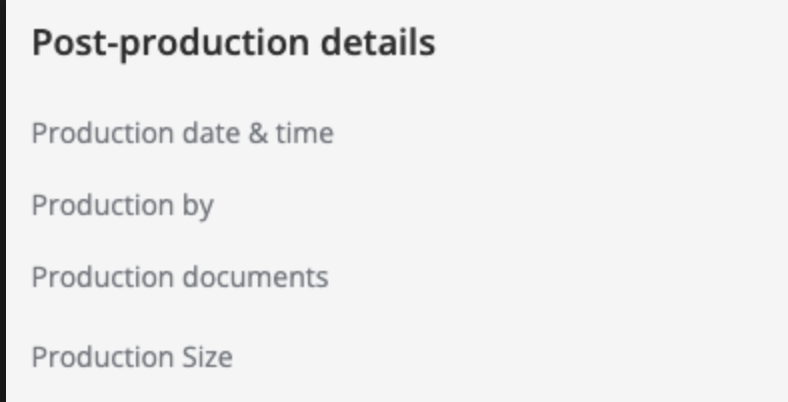⚡️ 1-Minute DISCO Download
Social media trademark infringement refers to the unauthorized use of protected brand elements (names, logos, sound marks, or product likenesses) across platforms like TikTok and Instagram. Unlike traditional violations, social media misuse happens in real time, spreads globally, and often blurs the line between parody and infringement.
📚Key Case
In Hermès v. Rothschild, a jury found that MetaBirkins NFTs infringed on Hermès’ trademark rights, affirming that virtual assets are not exempt from traditional trademark protections.
🌊 Dive Deeper
The section “AI Challenges with Social Media Content” explores how synthetic voices, deepfakes, and metaverse assets are reshaping the legal risks around brand impersonation — and why proactive protection matters more than ever.
Social media has transformed the way brands connect with audiences — and how quickly those brands can be misused or misrepresented. Trademark infringement that once unfolded in storefronts or print ads now plays out in real time across TikTok videos, Instagram handles, and viral memes.
For legal professionals, this presents new challenges, from spotting unauthorized use to responding to platform-specific violations and social media brand protection at scale.
I’ll break down the anatomy of social media trademark infringement, the emerging risks tied to AI-generated content, and practical steps for safeguarding your clients’ trademarks online.
💡Did you know? When data challenges require more sophistication than in-house capabilities can manage, DISCO professional services can help. Learn more about DISCO’s end-to-end ediscovery services.
Anatomy of social media trademark infringement
Traditional trademark violations typically unfold over months and don’t immediately impact a brand’s equity or reputation.
They often appear on physical products, in advertising campaigns, or through unauthorized use limited to a single geographic region. This gives brands time to identify the violation, assess the risk, and respond through established legal channels.
Today, social media moves faster than the law, enabling instant, global brand misuse. A single post can reach millions in minutes, blurring the lines between commentary and commercial use. Worse still, infringement can take many forms:
- Unauthorized logos in influencer content
- Misleading usernames that impersonate brands
- Viral memes that dilute trademark distinctiveness or tarnish brand reputation
The speed, scale, and user-driven nature of these platforms make it more challenging to monitor and enforce rights using conventional legal frameworks. As a result, legal teams must adapt their strategies to the realities of the digital landscape.
💡You might also like: How to Manage Ediscovery for Social Media
Platform-specific trademark challenges
Each social media platform introduces its own set of risks for trademark infringement, shaped by how users create and share content. From short-form videos to curated photo feeds, these formats open the door to unauthorized brand use in new and often unpredictable ways.
Here are some common issues on TikTok and Instagram, two of the most dynamic (and problematic) platforms for digital brand protection.
TikTok: The sound and video trademark frontier
TikTok’s short-form video format presents unique challenges for trademark protection, especially when it comes to audio. Brand sound signatures, jingles, and even product-related catchphrases are frequently reused in user-generated videos without permission, often divorced from their original context.
Because content spreads quickly and is often remixed or stitched by other users, unauthorized use can snowball before brands are even aware it's happening.
This creates significant enforcement hurdles, especially when the line between parody, fan engagement, and infringement is unclear. For rights holders, protecting trademarks on TikTok requires constant monitoring and a clear understanding of the platform’s remix culture.
Instagram: Visual brand identity disputes
While Instagram Reels introduce short-form video risks similar to TikTok, the platform’s core identity remains visual, built around curated images and aesthetic storytelling. This presents a distinct set of trademark challenges, especially when user-generated content incorporates trademarked logos, product packaging, or branded visual elements without permission.
Visual elements can be co-opted in ways that confuse followers or imply affiliation with the brand — intentionally or not. Additionally, disputes frequently arise over Instagram handles that mimic brand names or over the misuse of verification badges that falsely signal authenticity.
These issues can dilute brand identity, erode consumer trust, and trigger legal exposure if not addressed swiftly. For legal teams, Instagram requires vigilant enforcement of both visual and account-related trademarks to maintain brand control.
Related: Learn best practices for collecting and using the broad spectrum of data types that can become relevant in legal matters. Read our guide on complex data types in ediscovery.
Social media trademark rules and fair use protections
Courts continue to apply the “likelihood of confusion” standard to trademark disputes on social media, asking whether a reasonable consumer would mistakenly believe that a post, account, or piece of content is affiliated with or endorsed by the trademark owner. But applying that test in real time is far from straightforward.
Factors like usernames, profile images, hashtags, and even comment threads can contribute to confusion, though they often fall outside the clear-cut examples found in case law. Adding to the complexity, platforms vary widely in how they display content and what signals, such as verification badges, users rely on to assess authenticity.
These issues are further complicated by fair use protections, which can make enforcement less straightforward. Commentary, criticism, and parody are generally allowed under U.S. trademark law, even when they incorporate protected brand elements. Yet the lines can blur quickly, especially when content is monetized or goes viral.
Increasingly, the intersection of copyright law, social media, and trademark protections requires legal teams to think holistically when evaluating infringement risk. They must consider:
- The content itself
- How an average viewer might interpret it
- How courts will assess both confusion and context in the evolving social media landscape
For example, a meme that references a well-known brand in a satirical way may be protected speech rather than infringement. However, the lines can blur quickly, especially when content is monetized or goes viral.
AI challenges with social media content
AI-generated content introduces a new wave of trademark challenges on social media. In particular:
- Deepfakes
- Automated infringement
- Metaverse and NFT brand protection issues
Tools capable of producing realistic deepfakes or synthetic voices can easily mimic brand ambassadors, logos, or sound marks, blurring the line between authentic and artificial representations.
This issue isn’t entirely new, but with AI, it’s evolving rapidly. Setting the stage is a 1992 case, Waits v. Frito-Lay. The Ninth Circuit held that imitating Tom Waits's distinctive singing voice in a Doritos commercial could mislead consumers into believing that Waits had endorsed the product. While the case predates AI (and social media), it establishes that a recognizable voice can be legally protected, even when it’s not accompanied by a name or image.
Another issue is automated infringement. Automated systems can now generate and distribute content at scale, raising the risk of widespread trademark infringement with minimal human oversight. While the legal system is still catching up to this reality, courts have begun to acknowledge the potential for abuse.
For example, in the ongoing case Lehrman & Sage v. Lovo Inc., the plaintiffs alleged their voices, initially recorded for narrow, freelance use, were used to generate AI characters deployed across a range of content and platforms. The court allowed several claims to proceed, noting that mass replication by AI can infringe individual rights and potentially deceive consumers, even if the initial recordings were not explicitly trademarked.
Though the referenced order is on an early motion to dismiss, the case highlights a growing legal concern: that generative tools trained on proprietary inputs can flood the market with infringing content faster than brands can respond, especially when their outputs blur the lines between homage, parody, and unauthorized use.
Emerging digital ecosystems like the metaverse and NFTs present new challenges for trademark protection. Already, brands are seeing unauthorized use of their marks in virtual storefronts, avatar skins, and collectible assets.
A notable example is Hermès International v. Rothschild, in which the luxury brand sued artist Mason Rothschild over “MetaBirkins,” NFTs that digitally replicated Hermès’ iconic Birkin handbags. The jury found in Hermès’s favor, awarding $133,000 in damages and holding Rothschild liable for trademark infringement, trademark dilution, cybersquatting, and unfair competition.
The court rejected Rothschild’s defense that the NFTs were protected artistic expression, ruling instead that they were likely to confuse consumers and mislead them into believing MetaBirkins and the associated website were affiliated with the Hermès brand. The case affirmed that NFTs are not exempt from traditional trademark protections and signaled to brands that enforcement in virtual environments is not only necessary but also viable.
These developments complicate enforcement, requiring legal teams to adapt traditional trademark strategies to rapidly evolving technologies and digital ecosystems.
Related reading: How AI is transforming dispute resolution
How to protect your trademark on social media
Given the complexity and speed of social media infringement, especially with the added risks of AI and emerging digital platforms, trademark protection requires more than just reactive enforcement. Brands need a proactive, multi-layered strategy that includes thoughtful registration, consistent digital presence, and early detection of misuse.
Here are some practical steps to help legal teams safeguard trademarks on social media.
Strategic trademark registration
To fully protect a brand in social media environments, companies need a strong trademark strategy. Key to that strategy is registering trademarks across all relevant classes, including those that cover digital goods, downloadable media, and online services.
As platforms evolve, so do the ways brands are represented. In addition to logos and identifiable product names or packaging, they may also have profile handles, hashtags, NFTs, and branded content formats. In this context, overlooking a class or digital use case can leave gaps that infringers exploit.
Legal teams should also consider registering non-traditional marks such as sound signatures, motion marks, and brand colors, elements that increasingly define identity in video-centric and immersive platforms.
For brands with global reach, international registration is essential. Since social media content circulates freely across borders, infringement can easily originate outside the company’s home jurisdiction.
Leveraging treaties like the Madrid Protocol can streamline global protection, but strategic planning is necessary to account for jurisdictional differences in enforcement, class recognition, and fair use standards. Proactively registering trademarks enables brands to assert their rights confidently, lending more weight to their enforcement efforts when infringement occurs.
Need help managing ediscovery for trademark infringement cases?Learn more about DISCO’s End-to-end ediscovery services.
Secure your social media presence
Establishing a consistent, defensible brand presence across social media starts with securing key assets, especially usernames and handles that match your registered trademarks. Even if a platform isn’t part of your current strategy, it’s wise to claim your brand name early to prevent impersonation or cybersquatting. Mismatched or unavailable usernames can lead to confusion, lost visibility, and legal headaches down the line.
Beyond handles, ensure your brand’s profile images, bios, and visual identity are aligned across platforms to reinforce authenticity and prevent misrepresentation.
Equally important is managing how your brand appears in user-generated content. Develop clear trademark usage guidelines for employees, partners, influencers, and the public. This is especially important if your brand is regularly featured or tagged in social posts.
Brand guidelines should cover the appropriate use of:
- Logos
- Product images
- Brand language
They should also cover what constitutes endorsement or misuse.
Proactive monitoring and detection
Early detection is key to preventing trademark misuse from spiraling into public confusion or legal disputes. Proactive monitoring and detection can be achieved through:
- Automated tracking tools
- Social media listening techniques
- Systematic brand audits
Automated tracking tools and social media listening platforms can scan millions of posts, profiles, and hashtags in real time to flag unauthorized uses of brand names, logos, or related content.
Many platforms offer brand monitoring features or integrations that allow legal teams to set alerts for specific keywords, image matches, or geographic regions. These tools help identify both obvious infringements and more subtle cases, such as logo misuse in memes or sound mark replication in short-form videos.
Beyond automation, it’s essential to conduct regular brand audits across all social channels, including third-party platforms, e-commerce marketplaces, and influencer content. Systematic audits can uncover patterns of misuse, identify impersonator accounts, and reveal gaps in your enforcement strategy.
Global brands should also include regional platforms in their monitoring process. Combining automation with strategic oversight ensures potential violations are caught early, before they dilute your brand equity or complicate legal recourse.
Platform-specific enforcement procedures
Each major social media platform offers its own trademark reporting process, but response times and enforcement outcomes can vary widely.
On Instagram and Facebook, Meta provides a centralized Intellectual Property (IP) Reporting Center where rights holders can submit claims of trademark infringement. These forms typically require evidence of a valid trademark registration and a description of the violation.
Meta’s review process is relatively quick, with many reports processed within 48 hours, though success often depends on the clarity of your claim and supporting documentation.
TikTok and Twitter/X also offer trademark complaint forms through their support centers. TikTok requires a copy of the registered trademark and a link to the infringing content or profile.
Enforcement on TikTok is improving, but response times may range from a few days to over a week, especially during high-volume periods. Twitter/X has faced growing scrutiny for inconsistent enforcement since policy changes in recent years, and response rates can vary dramatically.
In all cases, building a relationship with each platform’s trust and safety or brand protection teams can significantly improve response times and resolution outcomes. For high-stakes cases, legal follow-up or escalation through platform counsel may be necessary to secure a takedown.
Need a smarter ediscovery solution?Learn why Am Law firms love DISCO.
Legal escalation and remedies
When informal takedown requests fail or the infringement poses a serious threat to brand reputation, legal escalation may be necessary. The first step is typically a cease and desist letter, which formally notifies the infringing party of the violation and demands corrective action.
In many cases, especially when the infringer is unaware or acting in good faith, this alone is enough to prompt removal of the offending content. However, when infringers persist or when the use causes reputational damage, lost revenue, or consumer confusion, filing a lawsuit in federal court may be warranted.
In federal trademark litigation, rights holders may seek a range of remedies, including injunctive relief (to halt the infringing use), monetary damages for actual losses, and, in cases of willful infringement, treble damages and attorneys’ fees. Courts may also order the transfer of infringing domain names or social handles.
However, litigation is costly and time-consuming, and success hinges on the strength of your trademark rights and evidence of consumer confusion or brand harm. For legal teams, the decision to escalate should weigh the business impact of the infringement against the time, cost, and strategic value of pursuing trademark infringement claims or preparing a strong trademark infringement defense if challenged.
Save time and costs with DISCO’s state-of-the-art legal AI software, Cecilia.
Platform relationship development
While most social platforms provide public channels for reporting trademark violations, building direct relationships with their trust and safety teams can dramatically improve enforcement speed and consistency.
In many cases, brands that demonstrate proactive rights management and clear documentation of past violations gain credibility with enforcement teams. Over time, this can lead to priority handling, faster response times, and even preemptive action by the platform when new violations surface.
You can also proactively introduce yourself or your brand to trust and safety contacts at social media platforms. Here are a few ways to do that.
Use brand verification processes – Going through official verification usually involves platform review of your brand and can open direct support channels for brands, which may connect you with trust and safety or brand integrity teams directly.
Use official reporting and contact portals – When you file trademark or IP complaints, use the opportunity to professionally introduce your brand. Consistently use brand email accounts (not generic emails) in platform communications to ensure they recognize you and your commitment to trademark protection.
Attend industry conferences and webinars – Trust and safety personnel from major platforms often participate in intellectual property, brand protection, or internet governance conferences (for example, INTA, IAPP, RightsCon). Attend these events to network, introduce yourself, or participate in Q&A sessions to increase visibility and establish first contact.
Join industry working groups – Organizations such as the International Trademark Association (INTA) or specialized IP and brand protection alliances frequently have established conversations with platform teams. Membership can give you vetted points of contact or access to collaborative roundtables.
Connect through LinkedIn or professional outreach – If you identify a trust and safety or brand protection specialist from the platform, send a professional message explaining your role, outlining your brand’s presence, and expressing your desire to collaborate on brand safety issues. Be sure to personalize these messages. Generic outreach is likely to be deleted.
The most effective introductions are concise, professional, and transparent about your objectives. Approaching with the intention to foster a constructive, long-term relationship — rather than only during crises — will yield better responsiveness and build trust over time.
Key takeaways for social media brand protection
Social media has dramatically expanded the scope and speed of trademark risk, from deepfakes and synthetic voices to user-generated content and virtual brand impersonation. Traditional legal frameworks still apply, but their enforcement is more complex in fast-moving, global platforms.
To stay ahead, legal teams must adopt proactive social media brand protection strategies, combining thoughtful registration, consistent social presence, automated monitoring, and strong platform relationships. As trademark law continues to evolve alongside AI and emerging digital ecosystems, the brands that act early and enforce consistently will be best positioned to protect their identity — and their equity — in the social era.
Enhance your legal practice with DISCO
Effectively managing social media trademark infringement demands speed, accuracy, and proven workflows. DISCO’s ediscovery platform, AI-powered solutions like Cecilia, and end-to-end managed services are purpose-built to help legal teams streamline document review, uncover evidence faster, and stay compliant in complex digital cases.
Whether you're responding to unauthorized brand use or preparing for litigation, DISCO enables you to move with confidence and precision.
Schedule a demo to see how DISCO can elevate your trademark enforcement strategy.






%20(1).jpeg)
.webp)







.png)